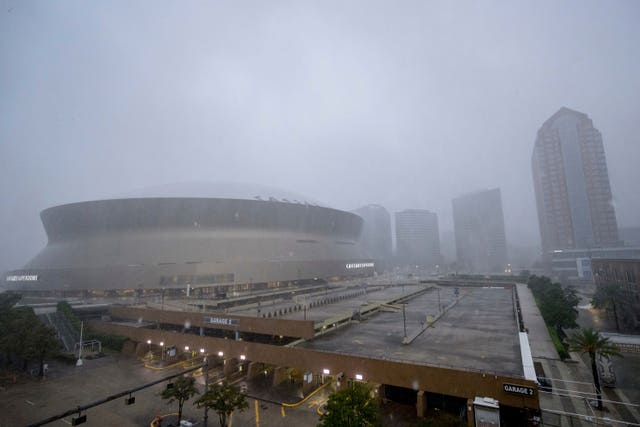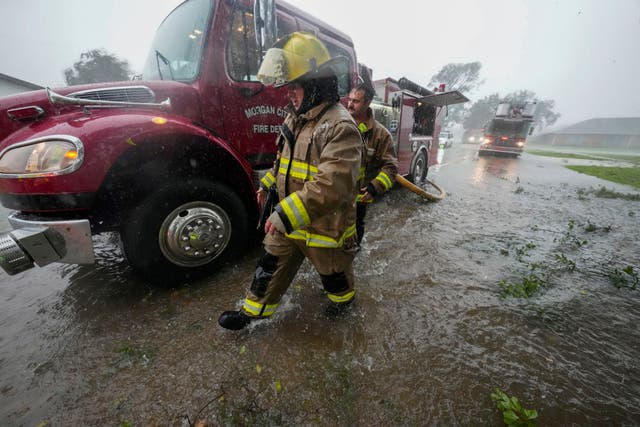Francine weakens and moves inland after battering Louisiana
New Orleans awoke to widespread power outages and debris-covered streets.

Francine has weakened after striking Louisiana as a Category 2 hurricane that knocked out power to hundreds of thousands of homes and businesses, sent storm surge rushing into coastal communities and raised flooding fears in New Orleans and beyond.
As heavy rain drenched the northern Gulf Coast, New Orleans awoke to widespread power outages and debris-covered streets.
Just before sunrise, large swathes of the city were without power, and home generators roared outside some houses. There were no immediate reports of deaths or injuries.
Up to six inches of rain was possible in parts of Mississippi, Arkansas, Tennessee and Georgia, with up to 10 inches possible in some parts of Alabama and Florida, forecasters said. Flash flooding threatened cities as far away as Jackson, Mississippi; Birmingham, Alabama; Memphis, Tennessee; and Atlanta.

Francine slammed into the Louisiana coast on Wednesday evening with 100mph winds in the coastal Terrebonne Parish, battering a fragile coastal region that has not fully recovered from a series of devastating hurricanes in 2020 and 2021. The system then moved at a fast clip towards New Orleans, lashing the city with torrential rain.
In New Orleans, rushing water nearly enveloped a pick-up truck in an underpass, trapping the driver inside. A 39-year-old emergency room nurse who lived nearby grabbed a hammer, waded into the waist-high water, smashed the window and pulled the driver out. It was all captured on live television by a news crew.
“It’s just second nature I guess, being a nurse, you just go in and get it done, right?” Miles Crawford told the Associated Press in a telephone interview. “I just had to get to get him out of there.”
News footage from coastal communities showed waves from lakes, rivers and Gulf waters thrashing seawalls. Water poured into city streets in blinding downpours. Oak and cypress trees leaned in the high winds, and some utility poles swayed.

The National Hurricane Centre downgraded Francine from a tropical storm to a tropical depression with maximum sustained winds of 35mph as it churned north-northeast over Mississippi.
The system was expected to continue weakening and become a post-tropical cyclone later Thursday before slowing down and moving over central and northern Mississippi through early Friday.
Power outages in Louisiana topped 390,000 early Thursday, according to the tracking site poweroutage.us, with an additional 46,000 outages reported in Mississippi.
The sixth named storm of the Atlantic hurricane season, Francine drew fuel from exceedingly warm Gulf of Mexico waters.
In addition to torrential rains, there was a lingering threat of spin-off tornadoes from the storm in Florida and Alabama.





